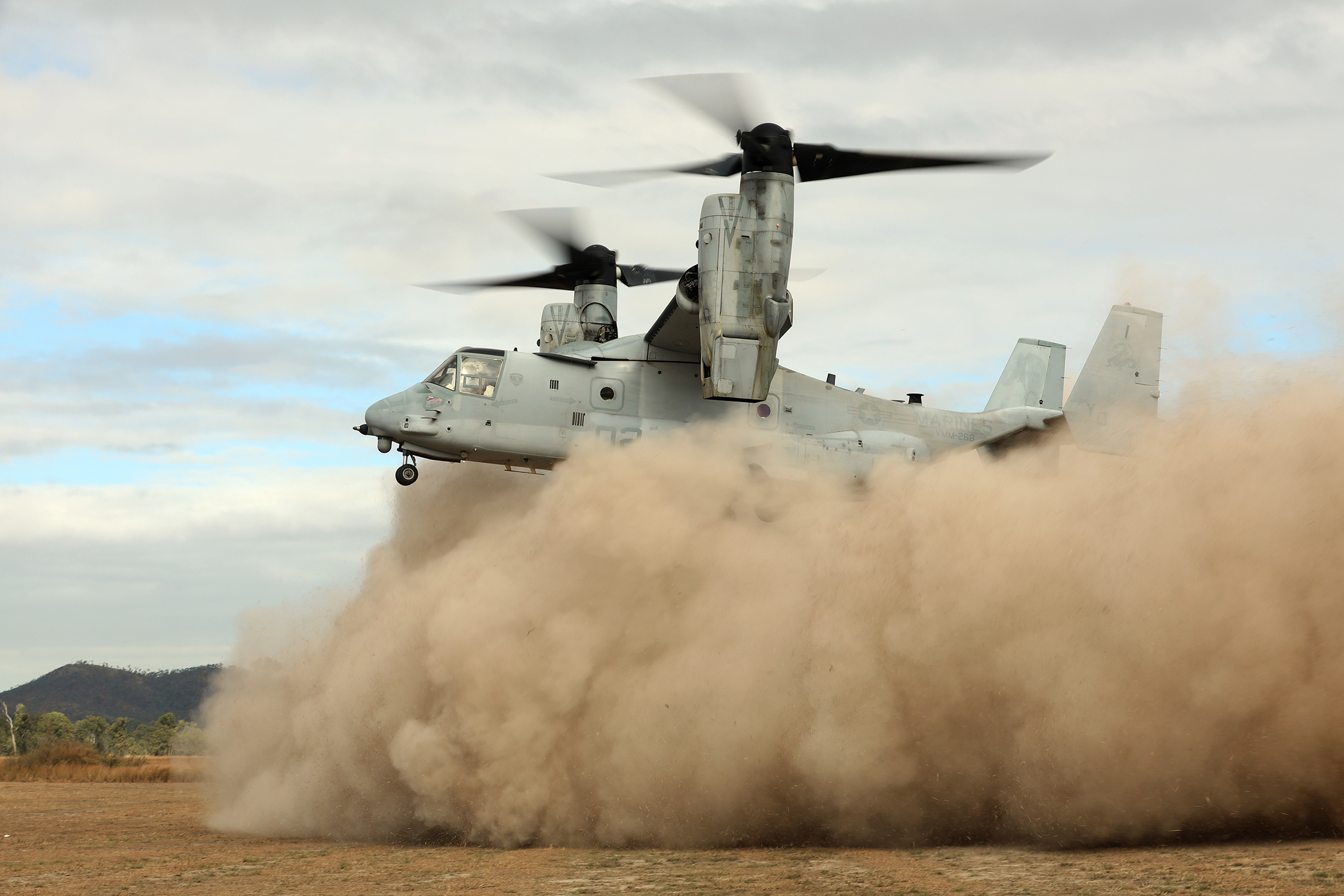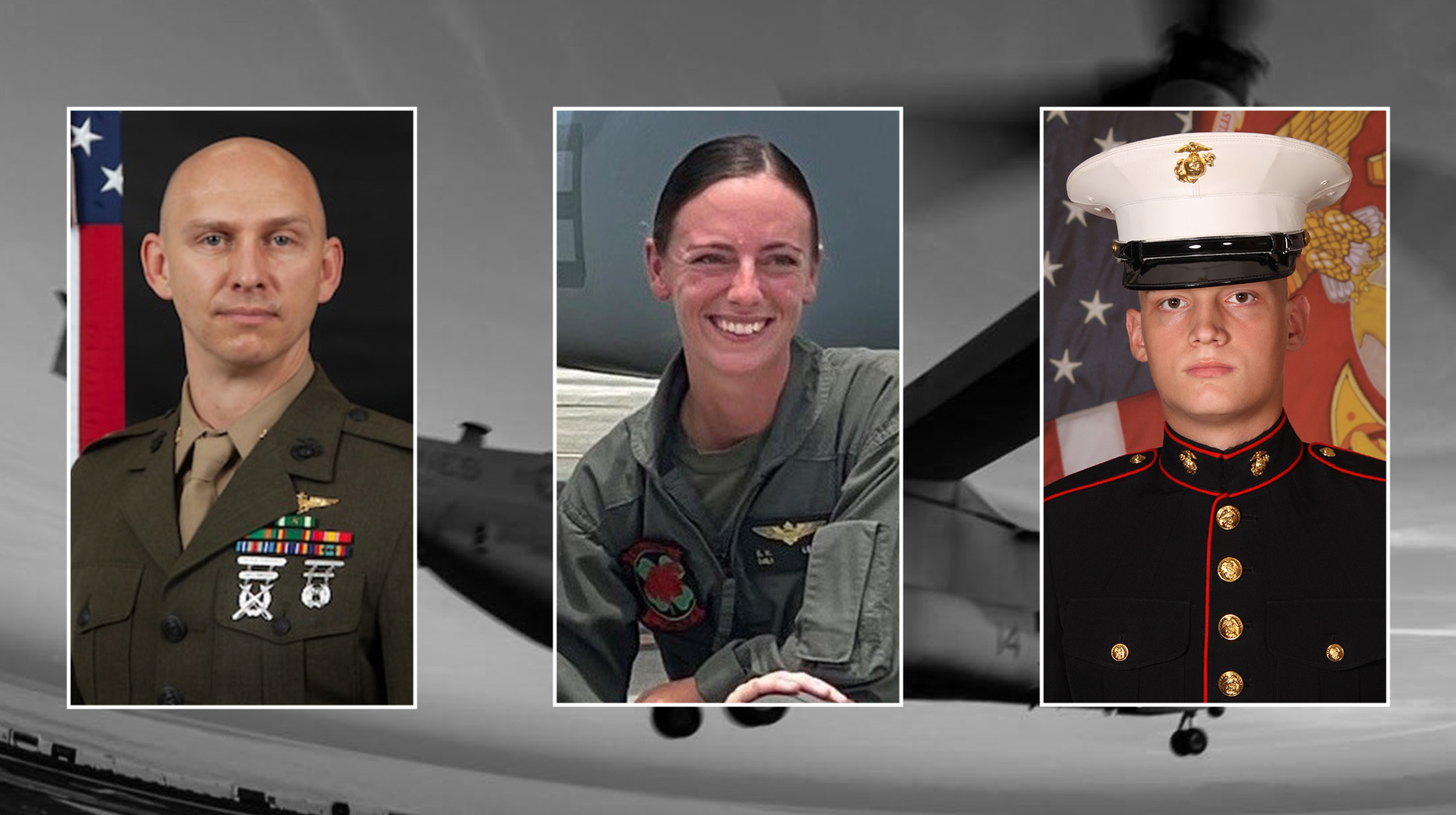
The MV-22 Osprey crash that killed three Marines and left 20 others injured in August 2023 was the result of several errors by the pilots during a near mid-air collision, the U.S. Marine Corps’ investigation found.
The report, released late on Friday Aug. 9 and shared by I Marine Expeditionary Force, outlines the several points of failure that led to the deadly mishap. It points to a lack of oversight by several members of the squadron, from the commander to maintenance crews, that led to an aircraft that should have been deemed unsafe to fly participating in a training exercise.
On Aug. 27, 2023, one Marine MV-22B Osprey with Marine Medium Tiltrotor Squadron 363 (REIN), Marine Rotational Force-Darwin crashed on Melville Island. It killed pilots Maj. Tobin J. Lewis, 37, and Capt. Eleanor V. LeBeau, 29. Cpl. Spencer R. Collart, 21, was also killed. The report found that Collart survived the crash but died while attempting to rescue the pilots from the cockpit.
During the exercise, two MV-22Bs left Royal Australian Air Force Base Darwin. They were on their descent when the lead aircraft suddenly reduced power. The trailing tiltrotor plane nearly hit it, but executed a sharp bank to avoid a collision. It took two more sharp banks, suddenly experiencing 20-knot tailwinds. The MV-22B quickly stalled and under the weight and position crashed nose-first onto Melville Island.
After the crash, Collart then “heroically re-entered the burning cockpit of the aircraft in an attempt to rescue the trapped pilots.” He died during this attempt and his autopsy showed “higher levels of combustion product inhalation.”

“We will never forget Maj. Lewis, Capt. LeBeau, or Cpl. Collart, and their loved ones as we continue to provide the safest, most capable platforms to the men and women who fly them,” IMEF said in its statement on the report.
The 20 survivors, including 19 Marines being transported to another exercise point, survived with injuries. The fourth crew member was seriously injured.
Subscribe to Task & Purpose Today. Get the latest military news and culture in your inbox daily.
Lewis, who was commanding the Osprey that went down, was also serving as the in-flight instructor for the other MV-22. Investigators found that he had not reviewed the loadout for his aircraft, nor had he attended briefings on the mission.
Investigators found several issues with the maintenance of the MV-22s involved in the operation, particularly the one that crashed. The report said that the MV-22 was poorly maintained, so much so that it should not have been certified safe for flight. However, it was allowed to fly, and both Ospreys had approximately 2,000 pounds of additional fuel than planned. The investigation found that a senior maintenance officer — unnamed in the report — violated the Uniform Code of Military Justice by making up and signing off on a form after the fatal crash about the MV-22’s load.
The report recommends several actions in the aftermath of the crash. It found that Lt. Col. Joe Whitefield, who at the time was the commander for the squadron, did not review the falsified form ahead of the flight. As a result, investigators recommend administrative action against him for permitting “a culture that disregarded safety of flight procedures.”
The MV-22 crash in Australia was one of several fatal mishaps involving the Osprey across the U.S. armed forces. A reoccurring clutch failure in the gearbox has been a prominent problem, and one that the military has been trying to resolve or help crews find workarounds for. Earlier this month Air Force Special Operations Command released its investigation’s findings into a November 2023 CV-22 Osprey crash in Japan that killed all eight crew members. That incident was the result of extremely worn mechanical pieces inside the gearbox that resulted in the crash, not a clutch failure.
Investigators into the Marine Corps Osprey crash also recommend that the Marine Corps order a temporary stand down of Osprey squadrons, so that those squadrons can review the findings from the report.
